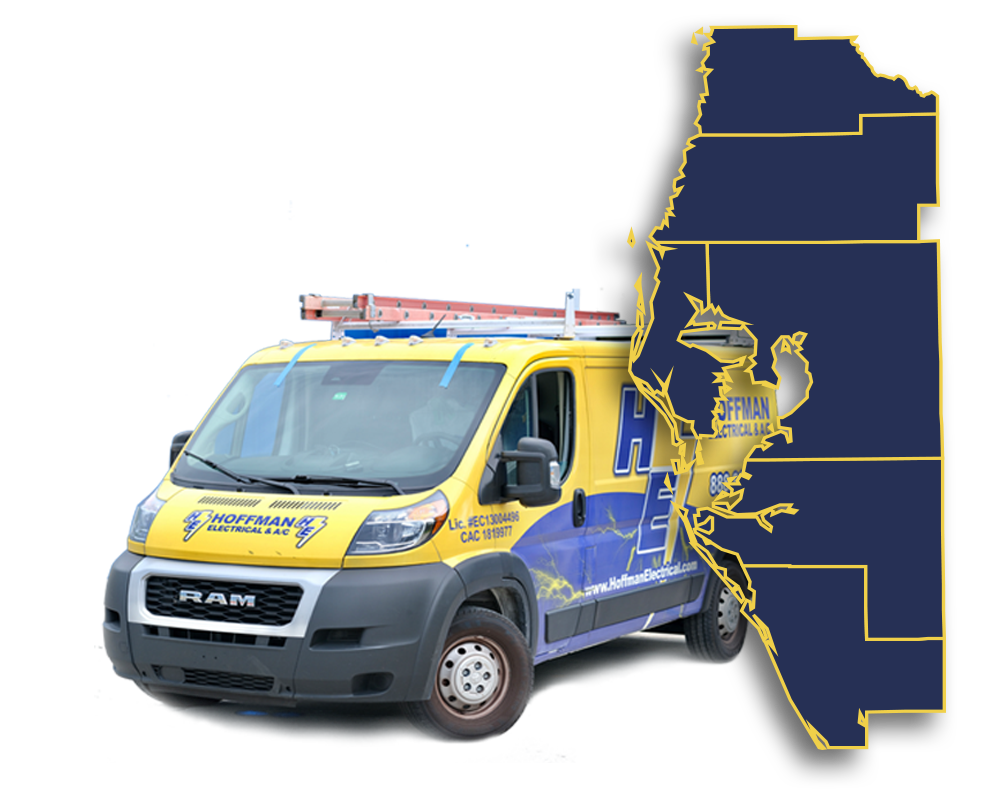- Electrical
- Generators
- Cooling
- Heating
- Coupons
- About
- Blog
- Contact
How often have you opened up a new appliance, read the directions, and completely understood them? Probably not that often. You’re not alone—the overabundance of electrical jargon in appliance manuals frequently leave people dazed and confused. Don’t be intimidated by your new dryer’s electrical requirements. If you’re ready to become an electrical lingo expert, look no further. The experts at Hoffman Electrical & A/C have compiled the most common electrical terms used in the industry to make you an expert, too!
The electric current in which the flow of electric charge periodically reverses direction.
The measurement of the flow rate of electricity. If you think in terms of water through a hose, amperage would be a measure of water volume flowing through the hose
The rate of flow of electrical energy through a conductor or wire, comparable to the amount of water flowing in a pipe. This is measured in amps (amperes).
The current which moves in a single direction in a steady flow. Normal household electricity is alternating current (AC) which repeatedly reverses its direction. However, many electronic devices require DC, and therefore must convert the current into DC before using it.
A ground fault is an electrical path between a power source and a grounded surface. While all electrical devices and appliances are “grounded” to ensure they can be safely operated, devices can still lose their grounding and divert electrical currents to the nearest channel that provides a path to the ground: you. Ground fault circuit interrupters help to protect your home’s appliances, while preventing electrical shock and fire.
The measurement of frequency, equaling one cycle per second, U.S. devices are typically 60 Hertz and international devices are typically 50 hertz.
When a circuit has carried a little too much energy for too long, the wires get extremely hot—which is very unsafe—causing the breaker to trip off.
A collective term applied to the positive (+) and negative (-) ends of a magnet or electrical mechanism such as a coil or battery.
A circuit in which the parts are connected end to end, positive pole to negative pole, so that only one path is provided for current flow.
A device made of two coil windings that transfers voltage from one coil to the next through electromagnetic induction. Depending upon the number of windings per coil, a transformer can be designed to step - up or step - down its output voltage from its input voltage. Transformers can only function with alternating current (AC).
The force or “push” driving electrical energy through a conductor or wire that can be compared to the pressure of water in a pipe.
If you need help with any wiring in your home—you’ve come to the right place. Hoffman Electrical & A/C can wire your new appliances, hook up your washer and dryer, GFCI installation, perform electrical upgrades, and much more! Our experienced electricians at Hoffman Electrical & A/C have been serving the Tampa and St. Petersburg area with professionalism and integrity since 1989. Call the experts at Hoffman Electrical & A/C at 866-238-3243 or schedule an appointment today!
